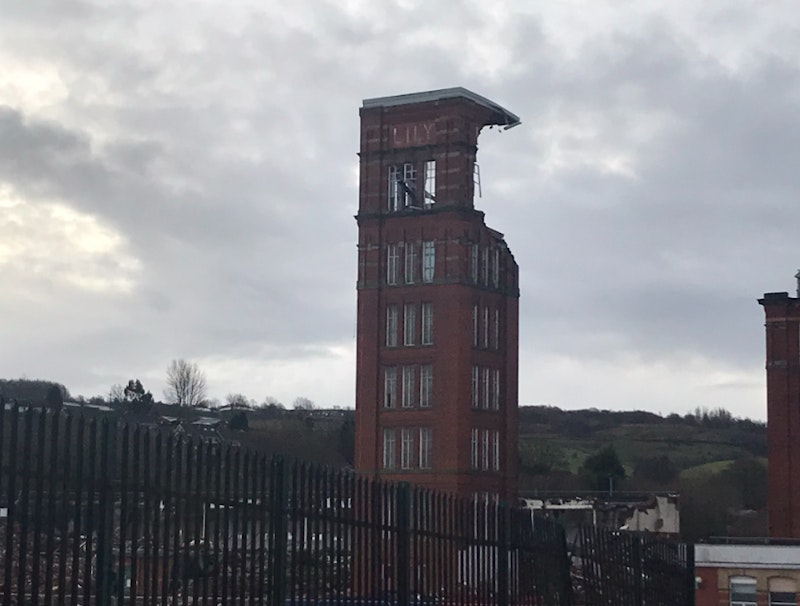Enrichment
Trouble at'Mill

19th January 2023
“Daddy, it looks like a monster has come down and taken a bite out of that building” was the comment from my son as we drove past the site of the Lily Mill in Shaw, in Oldham last week. He was right. It did, and without much fanfare or ceremony the mill was gone. Another part of Oldham’s industrial past consigned to the history books as it moves from a town with a cotton mill for every day of the year, to just enough mills to see us through to the end of the month.

From 1904 to 1977 the Lily Number 1 mill produced cotton - seeing both Oldham’s zenith as the worlds biggest cotton producing town, and the final death throes of the industry as mill after mill closed down, as deindustrialisation took a hold of the town.
But the Lily site was to get a second life. She was repurposed, being purchased by the Littlewoods Mail Order group in the late 1970s and converted into an 'ultra modern mail-order warehouse'. If the damp atmosphere, plentiful supply of coal, engineering innovations and a workforce skilled in textile manufacture led to the growth of Oldham as a cotton manufacturing powerhouse, then Oldham fell on its feet as it became a centre for catalogue distribution.
When stripped of the spindles and industrial machinery, mills such as the Lily were simply enormous spaces, perfectly suited to the storage of, quite literally, a catalogue’s worth of products. Added to this, was its location - with two junctions of the M62 within 3 miles of the complex, its connectivity to England's' motorway network was almost perfect as a National Distribution Centre. And there was the available force of former millworkers, looking for gainful employment. Home shopping quickly replaced cotton manufacturing as one of the dominant employers in the town - in 2000 the site employed over 1000 people and was Oldham’s largest private employer.
However, despite growing to what was said to have been one of the largest warehouses in the world, the site didn't move with the times and so the popularity of this site waned. Somewhat ironically automation led to the terminal decline of a building for which automation was once the thing that fuelled its success, and in 2018 it was announced that the Very Group were closing the site and relocating to a new distribution facility in the East Midlands. The move to a new state-of-the-art distribution centre was much more cost effective than updating and upgrading the Lily site.
The future for the mill is, as one might expect, housing. There is an acute need for housing in the North West and the development of this brownfield site is planned to include 400 new dwellings and open spaces for community use. This regeneration of the River Beal area is welcomed by many, who view the current site as an eyesore.
Its proximity to Manchester, Leeds, and the other large settlements along the M62 corridor, will make it attractive to commuters, and the 1600 new residents will (hopefully) enhance the local economy. However, stress and strain on the existing infrastructure and services may be a price that has to be paid as part of this redevelopment. Will the transport networks, council services, NHS provision and education facilities be able to support this influx of people into the area?
Might the 'monster', that has by now totally demolished the 100 year old Lily mill, in which my own Grandmother worked, create a bigger monster for the area when construction is complete? Or will this urban regeneration project make this site a brown(field) and pleasant land rising from the so called dark, satanic mills?
You might also like
Changing Places - A-Level MCQ Quiz
Quizzes & Activities
Tri-Dominoes - UK Economy (Paper 2) | Revision Activity
Teaching Activities